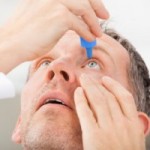

World Sjögren’s Day is July 23, and to get you ready we put together a list of our top articles that discuss Sjögren’s syndrome and accompanying factors and issues, including rheumatoid arthritis, fibromyalgia, depression, shingles, and atherosclerosis.
Dr. Henrik Sjögren published his doctoral thesis on the condition in 1933, and since then thousands of patients now have a proper diagnosis for their health problems. This July 23, the U.S.’s Sjögren’s Syndrome Foundation will join other Sjögren’s organizations around the world to celebrate the sixth annual World Sjögren’s Day, which would have been Dr. Sjögren’s 117th birthday.
We hope you find the below topics informative and that you take away some new insight about this autoimmune disease.
 Rheumatoid arthritis and Sjögren’s syndrome symptoms linked
Rheumatoid arthritis and Sjögren’s syndrome symptoms linkedRheumatoid arthritis and Sjögren’s syndrome symptoms such as dryness seem to be linked. Both rheumatoid arthritis and Sjögren’s syndrome are autoimmune disorders, which often occur together.
Rheumatoid arthritis is an inflammatory disorder, which can result in joint damage over time, if not treated. Sjögren’s syndrome is an inflammatory disease as well, and it is characterized by dry mouth and dry eyes as well as inflammation of the exocrine glands, which are responsible for moisture and lubrication.
Both rheumatoid arthritis and Sjögren’s syndrome can affect other organs as well, including inflammation of the nerves and the lining of the heart, as well as inflammation of the peripheral and central nervous system.
As with many autoimmune diseases, there is still much unknown about rheumatoid arthritis and Sjögren’s syndrome. It is believed that either condition may onset when something in the environment causes the immune system to go awry so it begins to wrongfully attack itself.
Generally, diagnosing rheumatoid arthritis and Sjögren’s syndrome is quite easy, as rheumatoid arthritis begins with swollen joints and Sjögren’s syndrome begins with dry mouth and dry eyes. But, sometimes, diagnosis can be difficult, as a Sjögren’s syndrome patient may experience joint pain and the condition may even present itself as lupus. Continue reading…
 Fibromyalgia symptoms overlap with primary Sjögren’s syndrome, linked to severe depression
Fibromyalgia symptoms overlap with primary Sjögren’s syndrome, linked to severe depressionFibromyalgia symptoms overlapping with primary Sjögren’s syndromeis linked to severe depression. Sjögren’s syndrome begins with symptoms such as dry eyes and dry mouth, as it affects the salivary glands. Sjögren’s syndrome is an autoimmune disease, whereas the exact cause of fibromyalgia is unknown. The analysis conducted on Sjögren’s syndrome patients uncovered a high prevalence of fibromyalgia – at least in 30 percent of patients – and found much overlap between the two conditions.
The researchers looked at 100 patients with primary Sjögren’s syndrome to identify the fibromyalgia comorbidity.
Sjögren’s syndrome patients may not only experience dry eyes and mouth, but also joint inflammation, muscle inflammation, nerve inflammation, thyroid issues, kidney inflammation, and inflammation in other parts of the body as well. Fibromyalgia contributes to chronic pain, which can impact a person mentally, physically, and socially.
Symptomatically speaking, fibromyalgia can mimic many other arthritic conditions and is also known as a rheumatic condition, affecting joints and soft tissues. Patients living with fibromyalgia may experience headache, fatigue, sleep disturbances, tender points, morning stiffness, irritable bowel syndrome, painful menstrual periods, numbness or tingling of extremities, restless leg syndrome, and sensitivity to temperature changes, noises, and bright light. Continue reading…
 Shingles risk rises in adults affected by primary Sjögren’s syndrome
Shingles risk rises in adults affected by primary Sjögren’s syndromeThe risk of shingles rises in patients with primary Sjögren’s syndrome. Primary Sjögren’s syndrome is an autoimmune condition that impairs many bodily functions and has been found to increase the risk of shingles.
To conduct their study, researchers examined data from the National Health Insurance involving 4,287 patients with primary Sjögren’s syndrome and 25,722 matched healthy controls.
For primary Sjögren’s syndrome, patients’ dry mouth and eyes were treated with immunosuppressants and pharmacological drugs like steroids. Patients were divided into the following groups: no pharmacological drugs, steroids alone, immunosuppressants alone, and combined therapies.
During the follow-up, 463 patients developed shingles along with 1,345 individuals from the control cohort. Shingles cases in Sjögren’s syndrome patients were higher compared to the matched cohort.
The incidence of shingles was also found to increase with age, meaning the older a patient with Sjögren’s syndrome was, the higher the likelihood they would develop shingles compared to younger patients.
Furthermore, the presence of medication and pharmacological drugs also increased risk of shingles.
The researchers concluded that Sjögren’s syndrome patients are at a higher risk for shingles compared to those without the syndrome. Continue reading…
 Cardiovascular disease, atherosclerosis prevalent in primary Sjögren’s syndrome patients
Cardiovascular disease, atherosclerosis prevalent in primary Sjögren’s syndrome patientsCardiovascular disease and atherosclerosis – hardening of the arteries – are prevalent in patients with primary Sjögren’s syndrome (pSS). Primary Sjögren’s syndrome patients are more likely to be diagnosed with hypertension and high cholesterol and yet, even though patients have risk factors for cardiovascular disease, prevalence of cardiovascular disease (CV) in primary Sjögren’s syndrome is understudied.
Researchers from the University of Perugia, Italy, conducted a large cross-sectional study to uncover the prevalence of cardiovascular disease risk factors in primary Sjögren’s syndrome by comparing patients with primary Sjögren’s syndrome and healthy matched controls.
The researchers found that the older the patients were and the longer they had the disease for, the more likely they were to have some sort of a cardiovascular event.
Patients with primary Sjögren’s disease generally smoked less than the controls and had a lower prevalence of obesity and diabetes, compared to the control group, and yet they had higher levels of hypertension and high cholesterol.
Compared to the general population, patients had higher rates of cardiovascular events involving the lungs and central nervous system.
The authors wrote, “Although these findings seem to support a close interaction between some traditional CV disease risk factors and disease-specific features of pSS, we found that patients without overt evidence of traditional risk factors indeed presented circulating anti-SSA/SSB antibodies, leucopenia, hypergammaglobulinaemia, and hypocomplementaemia more frequently than subjects with one or more CV disease risk factors. These findings, in line with the results of previous studies, appear to further support the independent role of disease-related features in favoring ATS [atherosclerosis] in pSS. This is consistent with the evidence that macrovascular impairment of endothelium-independent function and intima–media layer thickening in pSS are associated with leucopenia and circulating anti-SSA/SSB antibodies.” Continue reading…
 Primary Sjögren’s syndrome linked to sexual dysfunction in women
Primary Sjögren’s syndrome linked to sexual dysfunction in womenPrimary Sjögren’s syndrome is linked to sexual dysfunction in women. Researchers of the study strongly warn that sexual dysfunction should not be ignored in Sjögren’s syndrome patients, as it’s been uncovered that women living with the condition experienced increased sexual dysfunction, compared to controls.
Primary Sjögren’s syndrome (pSS) is an autoimmune disease that causes dry mouth and dry eyes, along with other symptoms. Vaginal dryness is another common problem in primary Sjögren’s syndrome which can contribute to sexual dysfunction.
Jolien F. van Nimwegen and colleagues from the University Medical Center, Groningen, compared sexual function and sexual distress in women with primary Sjögren’s syndrome and in healthy controls. Women had to complete questionnaires, answering questions on their sexual function, sexual distress, fatigue levels, anxiety and depression levels.
Women with primary Sjögren’s syndrome scored worse for levels of desire, arousal, orgasm, lubrication, and pain during intercourse, compared to healthy controls, revealing a higher level of sexual dysfunction. Patients with primary Sjögren’s syndrome had greater sexual impairment, impaired sexual function, and greater distress with regards to sexual function. Reduced sexual function was also associated with greater patient-reported symptoms, reduced motivation, and higher levels of mental fatigue, depressive symptoms, and relationship dissatisfaction.
Additionally, the study found that 67 percent of women with primary Sjögren’s syndrome never discussed their sexual dysfunction with their doctors, the most common reason being the doctor never brought it up.
Jolien van Nimwegen said, “The sexual health of patients with rheumatic diseases is often neglected, as both patients and physicians may find it difficult to address sexual complaints, partly because effective treatment options are not yet available. However, by simply acknowledging and discussing these complaints, rheumatologists can help patients to cope with their sexual problems. If necessary, patients can be referred to a gynecologist or a sexologist.”
“Sexual dysfunction should not be ignored in patients with pSS. Asking about sexual complaints is important, especially as many patients will not bring the subject up themselves,” concluded Jolien van Nimwegen. Continue reading…
Copyright © www.orthopaedics.win Bone Health All Rights Reserved